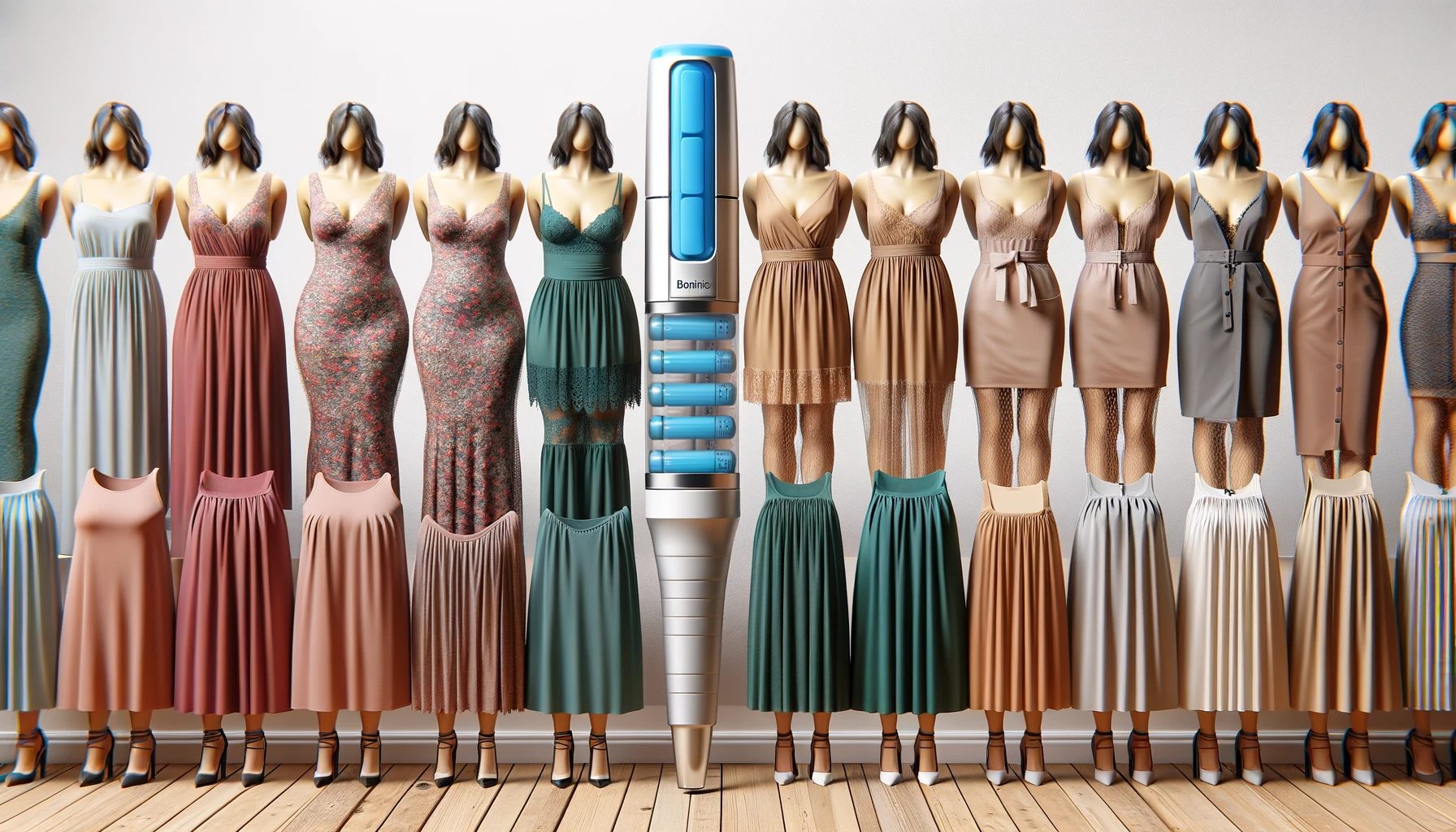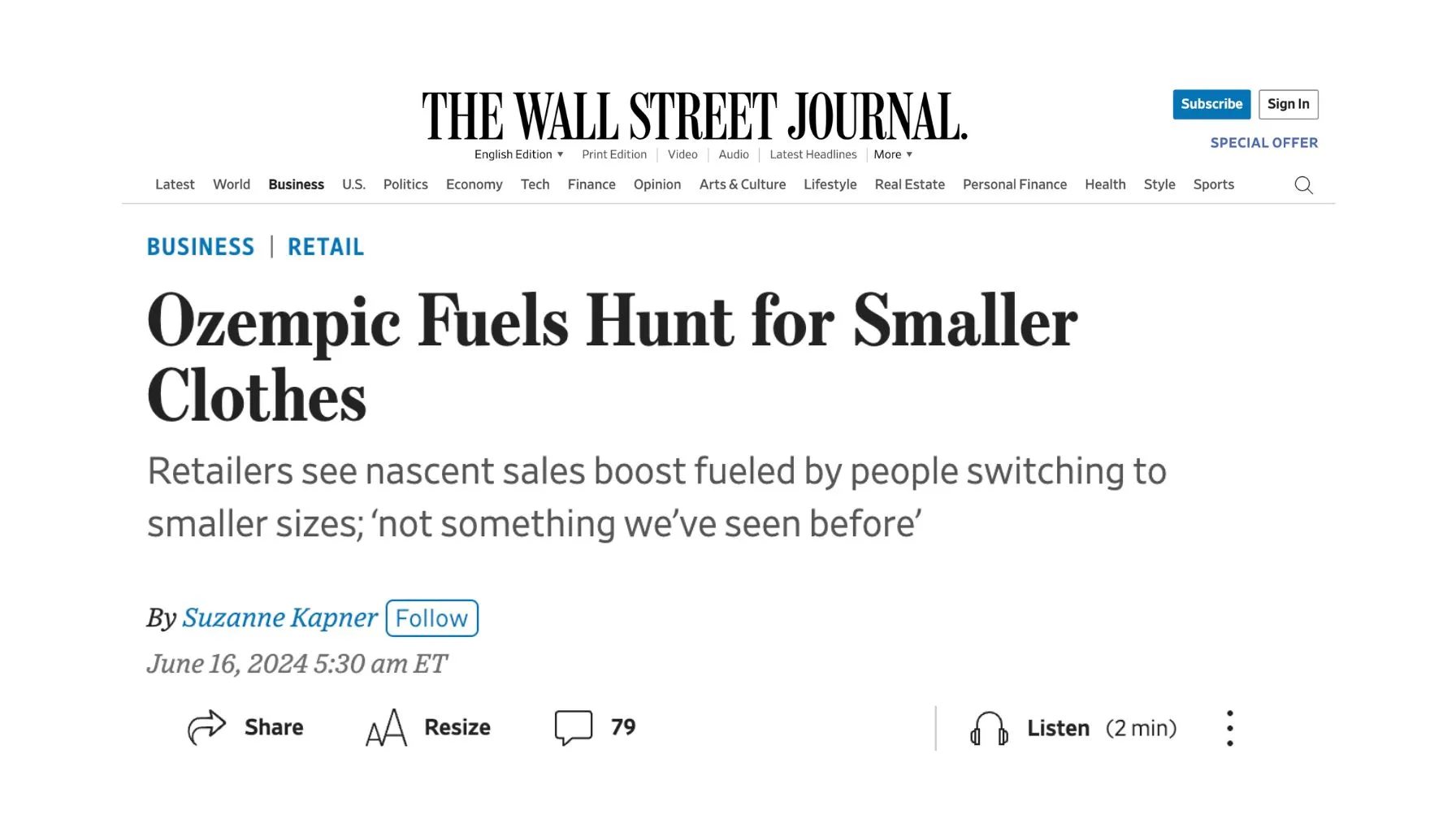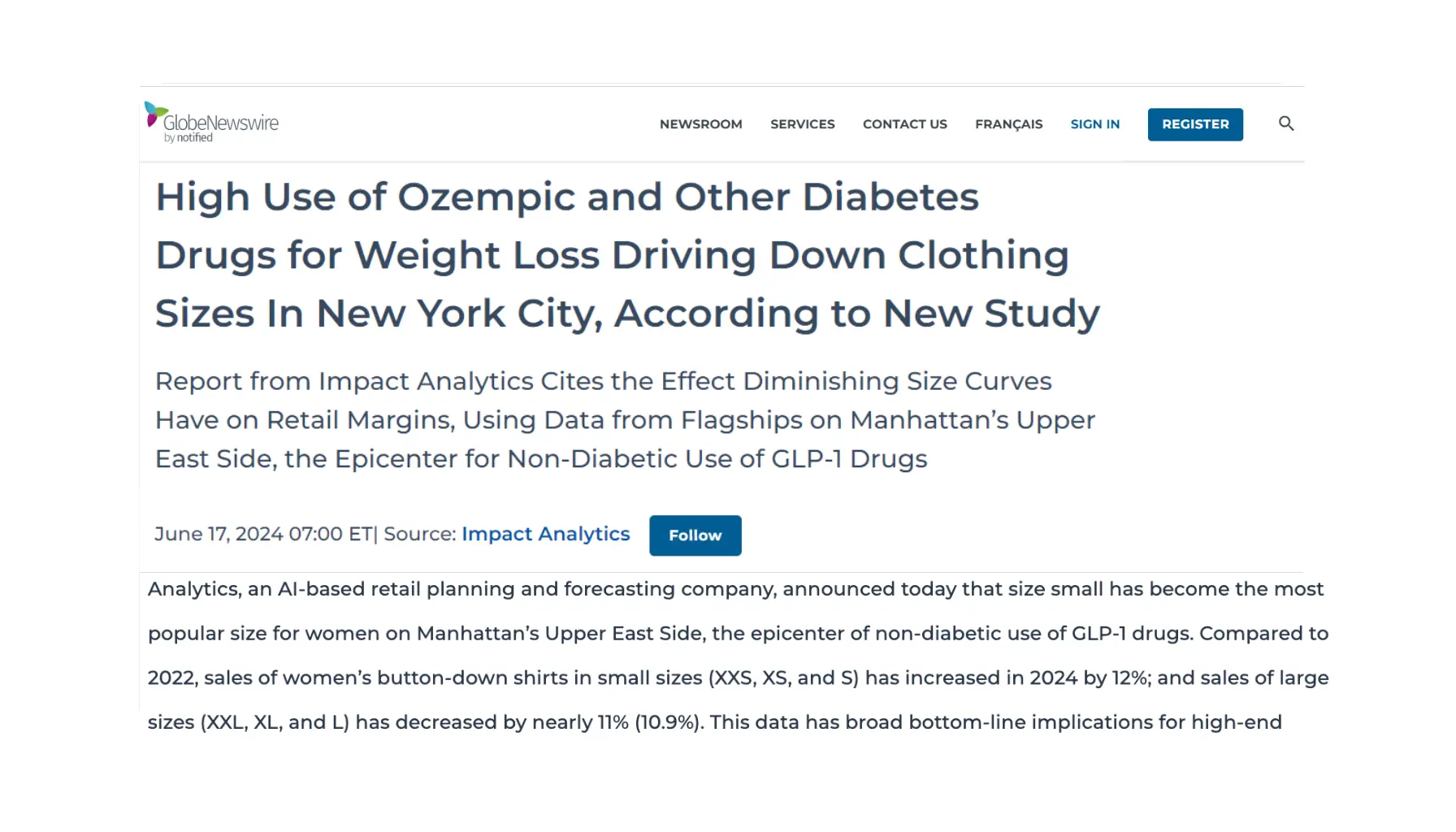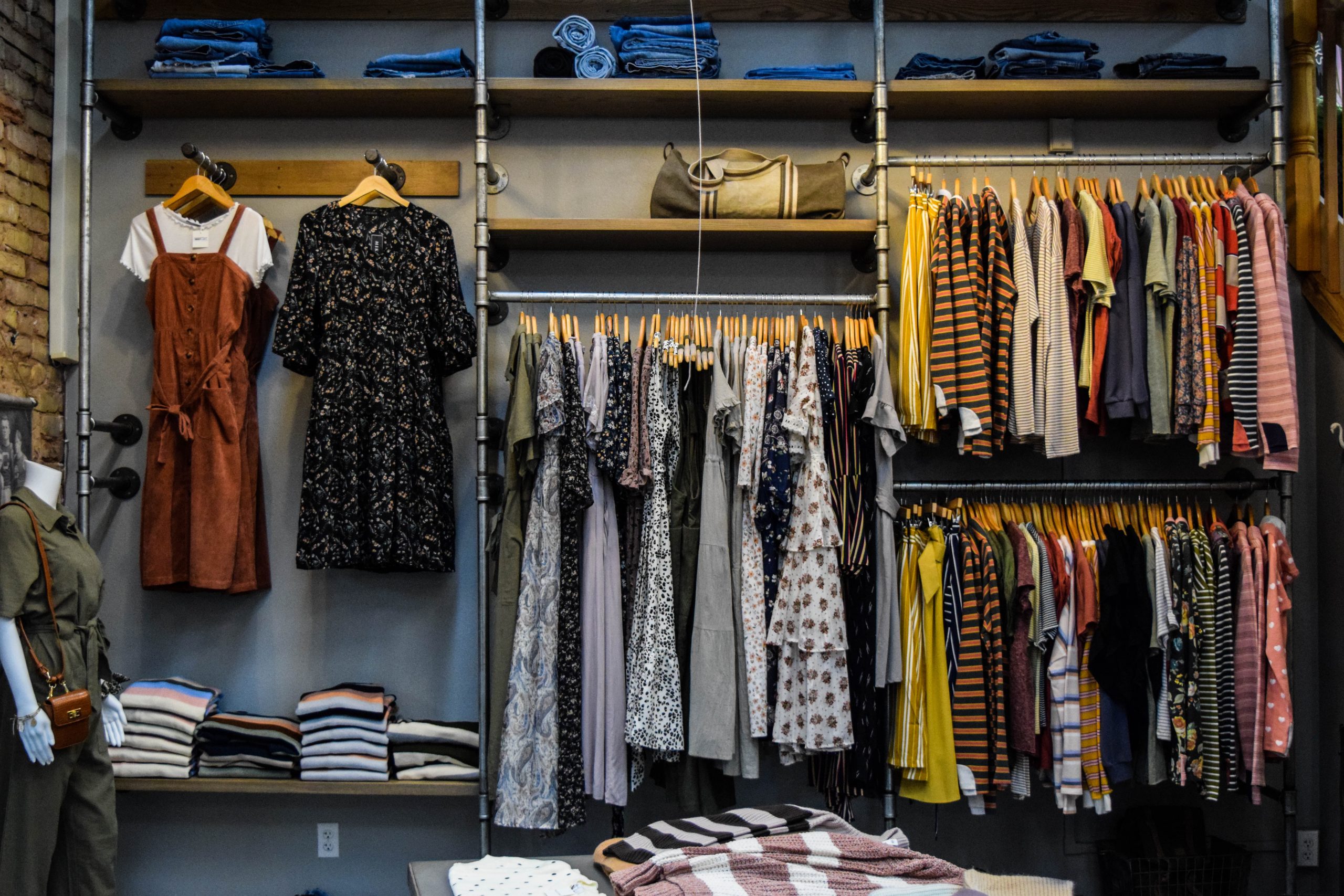To succeed, fashion and apparel retailers need to get almost everything right—that includes accurately forecasting clothing sizes to meet customer demands, which is certainly one of the industry’s central, perennial, and most frustrating challenges. As we explored in our latest white paper, this maddeningly shape-shifting challenge is being further scrambled by consumers’ uptake of GLP-1 drugs.
As we continually monitor this phenomenon’s effects so we may better advise our clients—and just because we’re really into this stuff—we decided to zero in on New York City, where GLP-1 drug use has exploded, particularly among the non-diabetic population. We had a feeling the drug’s impact here would be both interesting to observe as well as instructive for our clients.
We were right, big time.
GLP-1 Drugs: Their Creeping, then Leaping, Pervasiveness
GLP-1 drugs have been around for nearly 20 years and were originally approved (and are still prescribed) for treating Type 2 diabetes. But now, as virtually everyone of a certain age in America knows, they are increasingly being made available “off label” to promote weight loss. This growing trend has implications for individual and collective healthcare in the US, of course. But here we’re concerned with its impact on the fashion and apparel industries.
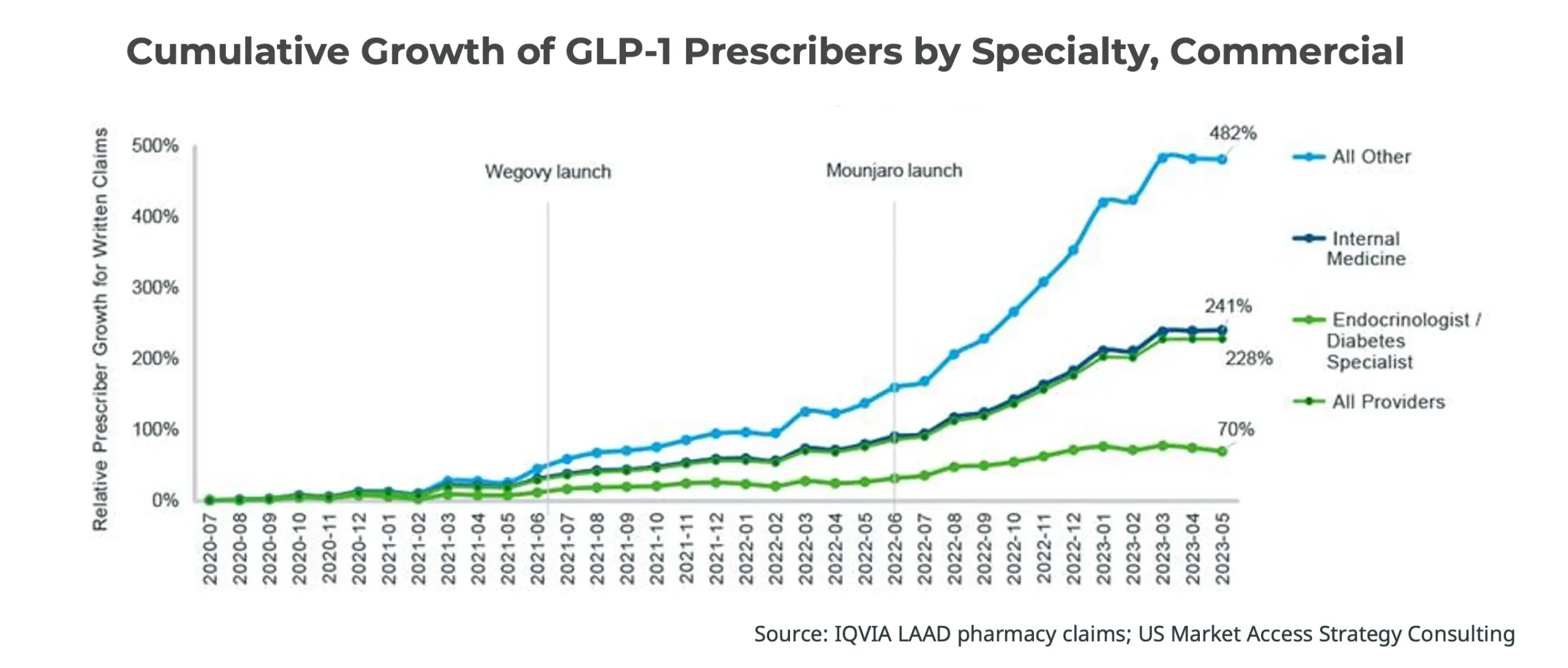
New York City’s Weight Loss Enthusiasts
NYC leads the world not only in fashion but also in GLP-1 drug usage. A striking 43.8% of the city’s GLP-1 drug prescriptions go to New Yorkers who do not have a Type 2 diabetes diagnosis. This demographic skews younger and is predominantly female (74.7%).
Further slicing the data, we observed the NYC GLP-1 drug prescriptions coalesce in the affluent neighborhood of Manhattan’s Upper East Side.
This usage concentration provided a unique opportunity for us to examine its retail impact.

The Impact Analytics Investigation
We examined multiyear sales from flagship stores of Fashion Apparel retailers prominently situated on Madison Avenue. We focused our analysis on shifts in clothing size curves, which reflect both the absolute and relative amounts of particular apparel sizes bought by consumers. Shifting size curves indicate a change in customers’ body sizes.
For the women: We found the size curve in women’s apparel—particularly in button-front long-sleeve shirts—has been trending smaller.

For the men: Similarly, there is a detectable trend towards smaller sizes in men’s size curves, although the shift is not as pronounced as it is for women.

Take the Next Step
These are early, still-developing trends. But if they continue or accelerate before plateauing as a new normal several years hence—something many top analyst firms expect, especially as today’s supply chain and health insurance obstacles are removed or smoothed over—fashion and apparel retailers are going to have to revisit their allocation and replenishment strategies. And then re-revisit them again. And again.
Thanks to GLP-1 drug use, whose isolated effects are significant but also seem to lead many users into a virtuous cycle of healthier eating and thus even greater weight loss, the shape of Americans is changing.
Get ahead of the curves with Impact Analytics.
Sources
“The N.Y.C. Neighborhood That’s Getting Even Thinner on Ozempic,” New York Times (2023)
“New Demand in an Old Market,” IQVIA Blog (2023)
“Patients Prescribed Drugs Like Ozempic® and Mounjaro® Have Increased Over 300%,” Trilliant Health, The Compass (2023)
Resources
Equip yourself with more information on the latest trends in the market, technology, and how your peers are solving their business problems.

Awards and Honors
Impact Analytics Ranked #1 Solution Vendor and Technology Innovator in RIS 2024 LeaderBoard

